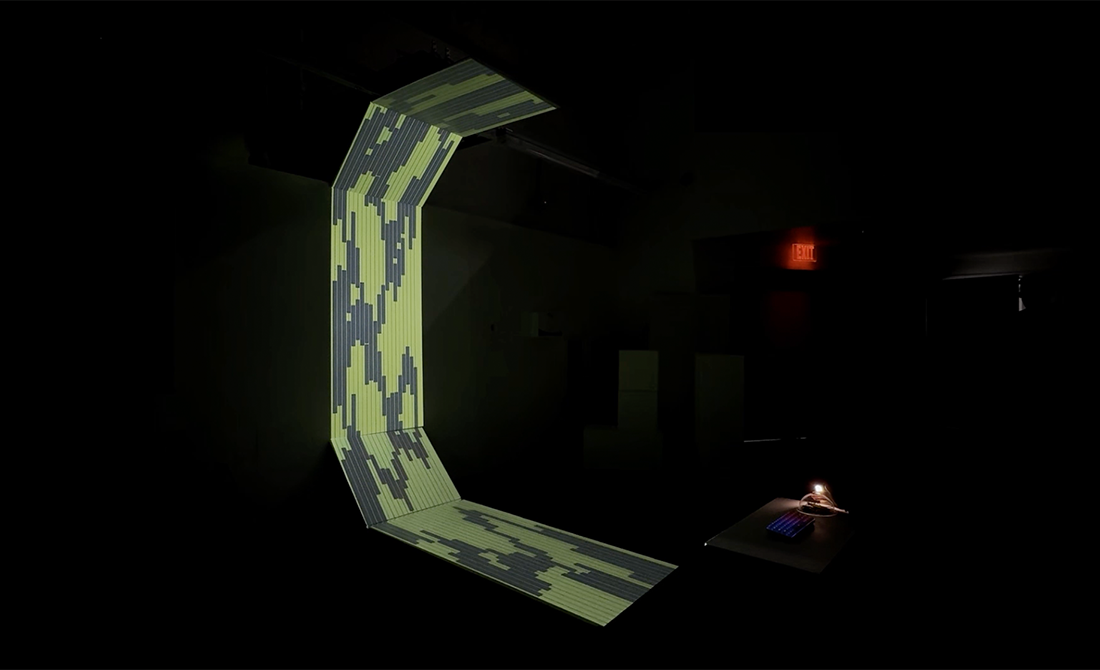We recently connected with Heejai Park and have shared our conversation below.
Hi Heejai, thanks for joining us today. So, let’s start with trends – what are some of the largest or more impactful trends you are seeing in the industry?
The biggest trend in the design industry right now is the integration of AI into creative processes, transforming how designers approach their work. AI allows for automating repetitive tasks and generating innovative ideas, giving designers more freedom to focus on the conceptual and emotional aspects of their projects. For instance, in my recent project, “GRAY AREA_FOG GENERATOR: Modular Typeface Motion Tool,” I used the OpenWeather API to create a typography system that responds to real-time weather data. By translating abstract environmental data into dynamic, engaging designs, I explored how AI can push creative boundaries while still allowing me to guide the narrative and aesthetic direction.
This trend presents exciting opportunities, such as enabling personalized, adaptive designs and fostering interdisciplinary collaboration between technology, art, and design. It shifts the designer’s role toward storytelling and conceptual thinking while the technology handles the technical groundwork. However, it also raises concerns about over-reliance on AI, potentially losing the human touch and emotional resonance in design. Additionally, biases inherent in algorithms need to be addressed to ensure equitable and thoughtful outcomes.
For me, AI is a partner rather than a replacement in the creative process. It enhances possibilities while ensuring that human creativity and cultural understanding remain at the heart of every project. By thoughtfully balancing technology with meaning, we can use AI to create designs that are innovative, impactful, and deeply connected to people

As always, we appreciate you sharing your insights and we’ve got a few more questions for you, but before we get to all of that can you take a minute to introduce yourself and give our readers some of your back background and context?
I’m Heejai Park, a senior Graphic Design student at ArtCenter College of Design with a passion for blending technology, creativity, and design to create meaningful, impactful work. My focus is on branding, generative design, and creative coding, where I combine traditional design principles with cutting-edge technologies to craft innovative and emotionally resonant solutions.
What sets my approach apart is how I see technology and aesthetics as deeply interconnected. I enjoy exploring the logic and precision of coding and computational design, but I always ensure my work reflects strong visual storytelling and a sense of beauty. Striking that balance between the technical and the artistic is at the heart of everything I create, and I believe it’s what makes my work truly unique.
Whether it’s a brand identity or an interactive project, my goal is to create designs that resonate on a personal, emotional level while pushing boundaries and exploring imaginative possibilities. For me, design isn’t just about solving problems—it’s about inspiring new ways of thinking and connecting with people in meaningful ways.

Is there mission driving your creative journey?
My creative journey is driven by a curiosity to explore how design can shape the way people interact with the world. I’m deeply interested in creating work that not only looks beautiful but also resonates on a human level, using design as a tool to inspire, challenge, and connect. At the core of my mission is the belief that design has the power to go beyond solving problems—it can spark conversations, provoke thought, and open up new possibilities.
I’m particularly passionate about the intersection of technology and creativity, and I see my role as a designer as bridging the gap between the two. By experimenting with generative design, creative coding, and other emerging tools, I aim to push the boundaries of what’s possible, crafting experiences that are dynamic, engaging, and emotionally impactful. For me, it’s about finding new ways to tell stories and create moments of connection that leave a lasting impression.

We often hear about learning lessons – but just as important is unlearning lessons. Have you ever had to unlearn a lesson?
A lesson I had to unlearn was the idea that every design needs to be perfect before it’s shared. Coming from a fine arts background, I was used to spending hours refining every detail before showing my work to others. I believed that the value of my work was tied to how polished it looked from the start. However, once I transitioned into graphic design and started collaborating on projects, I realized that holding onto this mindset could actually hold me back.
One project that shifted my perspective was a group branding assignment at ArtCenter. I hesitated to share my initial ideas because they felt incomplete, but when I finally did, the feedback from my peers transformed the direction of the project in ways I couldn’t have imagined alone. It taught me that sharing rough ideas early is not a sign of imperfection—it’s an opportunity to grow, collaborate, and refine. Design thrives on iteration, and sometimes the raw, unpolished concepts spark the most innovative solutions.
Unlearning the need for perfection helped me embrace experimentation and trust the process. It reminded me that design is as much about the journey as it is about the final outcome, and being open to feedback often leads to unexpected breakthroughs.
Contact Info:
- Website: https://heejaipark.info
- Instagram: @heejaipark
- Linkedin: https://www.linkedin.com/in/heejai-park-1a50a3236/




Image Credits
Heejai Park


